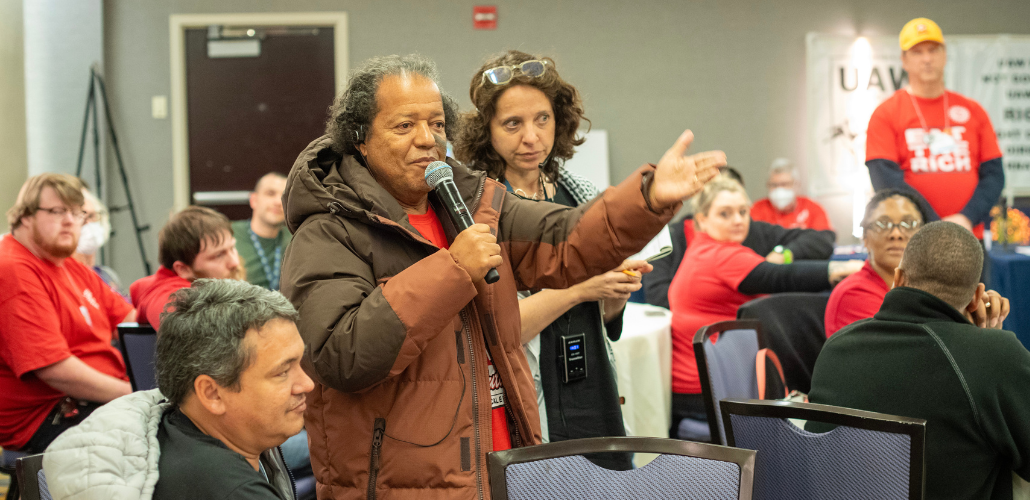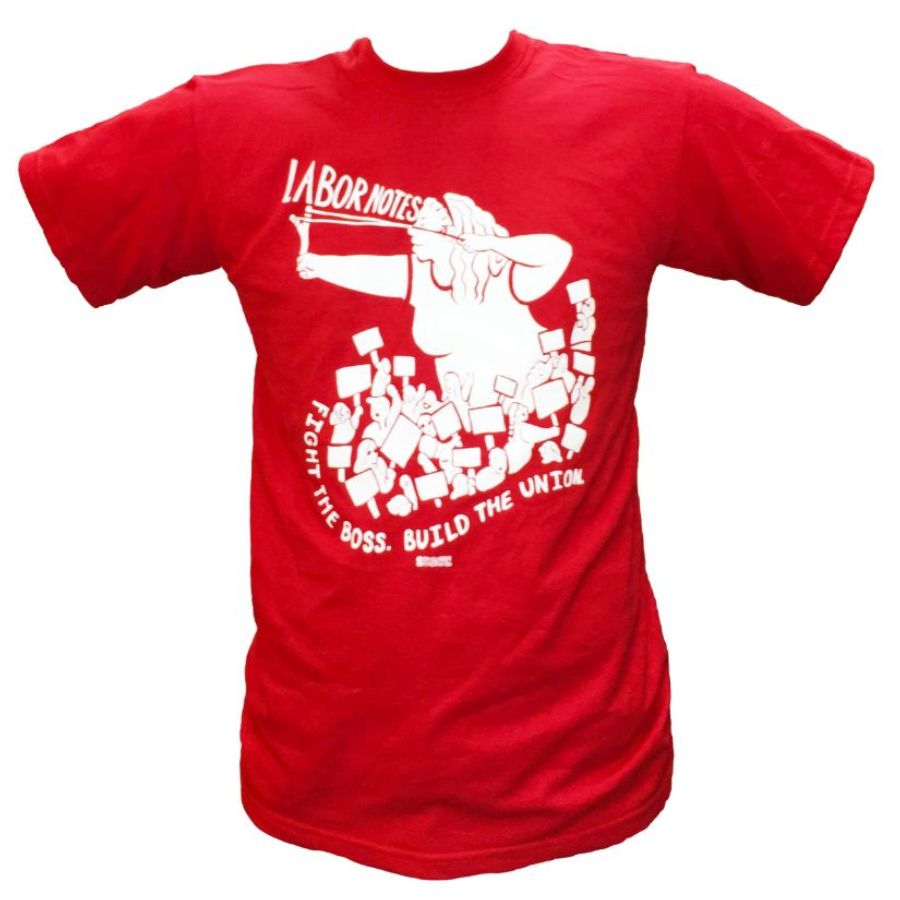meeting agenda
link for the meeting agenda is broken

Meetings got better when stewards shifted their focus from venting to problem-solving... and better yet when they started tracking grievances systematically to find patterns. (This photo is from the Labor Notes Conference.) Photo: Jim West/jimwestphoto.com
When I joined my local union, I dove in headfirst and became a steward. I was excited to see how things were run and where I might fall in the grand scheme of things.
It wasn’t quite what I expected; then again, I had never been in a union before. So I sat back and watched our organizer run our steward meetings, listened to the other attendees—and realized our meetings were gripe sessions, lacking structure and focus.
Stewards and members alike were expressing frustrations, but there was little tangible action to address these issues, as far as I could tell.
Inspired by our organizer’s call for stewards to take ownership of the union, I took the initiative to transform our meetings. By implementing a structured agenda based on Robert’s Rules of Order, we shifted our focus from venting to problem-solving.
The agenda now guides us through the major points of discussion, such as Labor-Management Committee Updates, Organizer Updates, Work Group/Committee Updates, Partnership Agreement Dispute Updates (resolved, ongoing, new), Membership Engagement & Updates, Action Items, and finally a Round Table for those who are not stewards.
All members are invited to attend these steward meetings—they can listen in and learn about what’s going on, and then during the Round Table they can speak up and participate. This time has proven quite valuable for stewards to hear member concerns.
The new format, though it initially met some resistance, has significantly improved our productivity. For instance, instead of just griping about unfair hiring practices, we were able to identify that the root of the problem was H.R.’s review process. That allowed us to move forward with a massive dispute that could create change across all divisions, rather than a bunch of single disputes with supervisors who couldn’t fix the real issue.
As our productivity grew, I realized we needed even more organization: we needed a way to track what all the stewards were up to. We were struggling to keep up with the complex timelines for filing grievances and Partnership Agreement Disputes.
So I created a Google sheet with a robust tracking system for grievances and disputes, the two largest-ticket representation items for us, plus tabs of useful data for stewards to have at their fingertips.
The steward starts by typing in the name of the claimant, the details of the offending party, their working unit, the perceived contract breach, and the date of the incident. The sheet has built-in formulas to tell them the deadline dates for initiating either a grievance (within 10 calendar days) or a Partnership Agreement Dispute (within 20 working days).

Give $10 a month or more and get our "Fight the Boss, Build the Union" T-shirt.
Once the steward initiates a Partnership Agreement Dispute, they check the Step 1 box. Another date automatically fills in, letting them know how long to wait before taking the next step. There are checkboxes and dates for each step, guiding the steward to the next deadline, plus columns for the names of the steward and backup steward, additional notes, details, and updates.
When I first created this form, I didn’t have all the checkboxes—just a drop-down menu for the current status, which would be overwritten as each step progressed. But I learned early on that, to properly track our wins and losses, we needed to be able to look back and see how each step had progressed historically.
Preserving this history allows us to track how successful we are at each step of the process. Maybe a concern about proper headphones for call center staff gets resolved at the first step, whereas a concern about discriminatory hiring practices doesn’t see resolution until Step 3. We can look for patterns, like whether we’re getting more pushback from management in certain divisions, and these observations inform our strategy.
The checkboxes and formulas have taken a lot of the brain power out of tracking deadlines and details. This allows stewards to focus on what matters most—our colleagues, and helping them navigate the rough waters of government work and union services.
The spreadsheet also has tabs for Contractual Milestones, Disciplinary Meeting Representations, General Concerns that do not qualify for escalation but still need to be addressed, Requests for Open Records, Q&As for the Contract, Resource Links, Steward & Staff Rosters, and a Glossary of Terms. The idea is to collect as much helpful information as possible, all in one place.
Now that we’re tracking every step, we can really see the bigger issues that are affecting our workplace. We more easily identify patterns of behavior by management, concerns within different working units, and even concerns with the union itself.
One of the larger patterns we identified was managers refusing to meet with us. We had a side agreement that encouraged managers to hold “informal meetings” with stewards to help solve problems outside the formal process, but managers were refusing these meeting requests in bad faith—justifying their refusals with obscure wording from our partnership agreement or their departmental policies. When we realized this bad behavior was happening all over, we initiated a formal Step 1 with our Human Resources Director and Labor Management Coordinator.
You can find a template version of our tracker spreadsheet at bit.ly/GrievanceTracker. Feel free to make a copy and adapt it for your own use.
You can also find a sample of our meeting agenda at bit.ly/StewardAgenda. It’s color-coded: purple text was added during the meeting, a very basic note about something that was discussed. We don’t currently have a secretary to take detailed minutes, so this gives us an easy option for tracking changes from meeting to meeting, and for people who could not attend to see what happened.
Bonny Hulberg works for the Colorado Department of Revenue and is a steward with CoWINS.